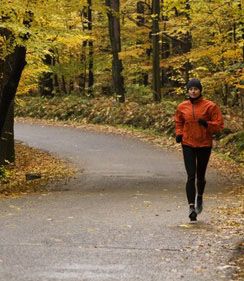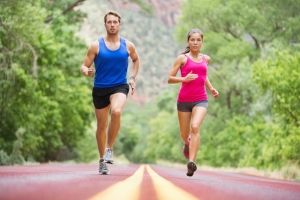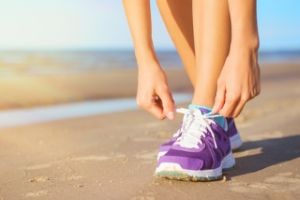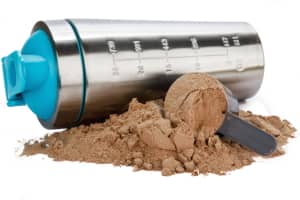The off-season in brief: take an active break
Autumn is an important stage in the cycling season. The days get shorter, the weather is less pleasant, the temperatures are cooler, fatigue from the accumulation of effort sets in, as well as weariness and even discouragement. All these elements contribute to make cycling less regular and less active.
The off-season marks the end of the season and competitions and introduces the next season. It starts around October-November and lasts about 3 months.
While it used to be common to stop all physical activity for 1 to 2 months during the off-season, this is no longer the case today. Sports professionals agree that there should be no break other than a possible 10 to 15 days maximum. A longer total break could be detrimental, even fatal, to the following season.
This active rest time should be seen as an opportunity to change habits while working hard enough to maintain a good physical condition until the next season. You should reduce cycling and replace it with other endurance sports.
Objective: change habits while keeping the assets
The off-season should be used to:
- Maintain a good physical condition, preserve the assets and prepare the next season
- Decompress, break the monotony, recharge your batteries
- Strengthen the least used muscles
Keep in shape!
Maintain a good fitness level so to not start from scratch at the next season. Practice endurance work and try to maintain VO2 max at its highest level (see how to measure VO2max) and anaerobic threshold.
Nous n'affichons pas de publicité. Pour pouvoir offrir un contenu gratuit, nous sommes rémunérés par l'affiliation (petite commission sur chaque vente, cela ne vous coûte pas 1 centime de plus). Certaines photos et liens peuvent ne pas fonctionner avec les Adblockers. Pour une navigation optimale, nous vous recommandons de le désactiver.
Take it easy !
The off-season should be an opportunity to take a break. Enjoy yourself, vary your activities and don't put pressure on yourself! It is important to avoid weariness and to recharge your batteries after the difficulties of the past season.
Work on the least used muscles
With less sustained activity, use your free time to work on your flexibility, build up the less stressed areas and stretch (see our article on strengh training.
In addition to these main objectives, the off-season is a good opportunity to take a step back from the past season, to take stock and to perfect cycling techniques. Through a healthy diet and low-intensity sports activities, it is favourable to the elimination of toxins and to the preparation of the muscle for the efforts to come when training resumes.
In practice
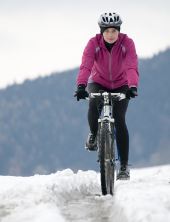
Play other sports
Take a break on your favourite sport and try other activities besides cycling, such as swimming, jogging, walking, cross-country skiing or mountain biking. During your cycling outings, work on a light base and devise nice, low-level routes that are different from those you already know, the idea being to break the routine. Avoid violent or team sports that cause too many changes in heart rate.
If the weather is really not suitable, practice indoor activities such as the elliptical bike which is very complete (80% of the muscles of the body are worked, read our file on the benefits of the elliptical bike, the rowing machine (very complete in the work of the upper and lower body), or the treadmill which can replace a jogging session outside.
Your efforts should remain low intensity to allow the opening of all the capillaries and thus oxygenate the muscles while eliminating the toxins accumulated during the season. Practice a session of half an hour to an hour 2 to 3 times a week.
Breathe!
Your sports activities should not be intensive. It is not about competition! The objective is to relax while maintaining what you have learned. Take advantage of this time to renew contacts with your sporting friends, organise outings together, and encourage Sunday outings with your family. This time should be an opportunity to slow down the pace and not to add stress.
Respect your food hygiene
Pay special attention to your nutrition. Eat healthy and drink a lot, water of course...
Muscle up!
Apart from the leg muscles, cycling hardly works any other muscles in the body (back, abdominal muscles, arms, etc.). Use your free time to strengthen them. Most gyms offer a GPP (General Physical Preparation) program that will help you do this. Strength training has other benefits, especially for improving your metabolism and losing fat (see our articles on Strength training, an effective way to lose fat and The health benefits of strength training). Electro-stimulation is also a good way of strengthening muscles without any particular effort (see our article on the benefits of electro-stimulation).
Work on stretching
Stretch after exercise, preferably after a rest period, e.g. after a shower. Use all the joints. This practice should of course be maintained throughout the year, but the off-season should allow you to devote more time to it. See our file on) stretching, practical advice.
Work on velocity and muscle coordination
For an efficient pedalling, practive "round pedalling", a non innate technique which is forgotten very quickly. It must be worked on throughout the year as well as the velocity which consists in knowing how to turn the legs quickly. The home trainer is a useful tool for these exercises (see our explanations, advice and exercise for home trainer).
These articles may also interest you
Running: 10 mistakes to avoid when starting out
The 5 best food supplements to improve sports recovery
Photo credit : Adobe Stock. This article contains commercial links.

